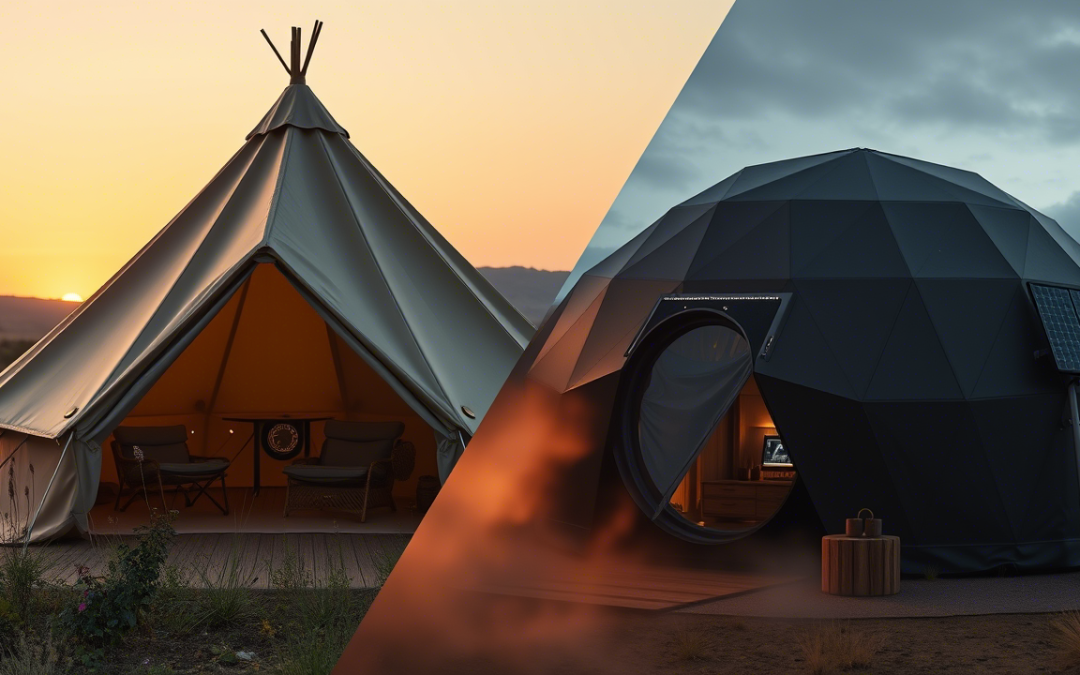Introduction
As the campers tap their smartphones, a hush falls on the alpine meadow, and solar panels suddenly unfurl across the tent’s rainfly. Seconds later, the internal environment of the tent adjusts, LED lanterns glow warm amber, and a small icon confirms to the tangle of phones that everything is charging wirelessly. This marks the beginning of a new dawn: the bright tent. Off-grid living no longer means basic nylon tents and cold campfires; today’s connected shelters generate and manage their power, reshape how we interact with nature, and challenge our expectations of what camping can be.
The Evolution of Camping Shelters
Tent innovation has historically kept pace with human ambition. Mid-nineteenth-century bell tents, such as Henry Hopkins Sibely’s 1856 version, contained a hefty center pole supporting the shelter for dozens at military and pioneer campsites. Early in the twentieth century, canvas gave way to lighter synthetics and collapsible metal poles, prompting dome shapes in tents that could be more portable. Bill Moss’s 1955 Pop Tent featured snap-back fiberglass supports and instant setup, making it so revolutionary that MoMA included it in its permanent collection. The 1960s saw Springbar’s tension-based rigs, while at the turn of the century, mountaineering pioneers such as Edward Whymper and A.F. Mummery crafted ridge-style and ultra-lightweight tents for alpine conquest. Each jump in material, structure, and design laid the groundwork for the multi-functional environments we live in today, culminating in photovoltaic textiles and integrated electronics that will power the next generation of outdoor living.
Core Technologies Powering Smart Tents
Photovoltaic Integration
Modern, bright tents weave photovoltaic threads into the main screen or afford fast, disposable thin-film panels that unfurl with a touch of a smartphone icon. Textile innovators have developed flexible solar cells into textiles to create flexible and fabric curvature morphology sufficient to provide energy for running interior lighting, cooling fans, or charging devices throughout the day. The retractable arrays maximize exposure to sunlight during its highest hours and can easily retract their outlets for on-demand use as the clouds gather.
LED Lighting and Safety
Gone are the days of lanterns dangling and haphazard flip-open lights. Today’s shelters come furnished with color-tunable interior LEDs, bright white for cooking and preparation, warm amber for reading, and maybe even an SOS strobe mode in emergencies. Some illuminate their stakes, transforming a perimeter around your campsite so you’ll know not to trip over it in the darkness and won’t wander off by any curious critters.
Wireless Power and Connectivity
Inductive-charging surfaces incorporated into the tents’ floors and pouches let campers plug their phones, tablets, and wearables up just by placing the gadgets down- no more tangled cords needed. Most shelters also have central hubs that serve as hotspots for Wi-Fi or repeaters, thus bringing connectivity to the remote wilderness and enabling people to update firmware or check in via social media even miles from the nearest cell tower.
App-Controlled Climate Systems
Innovative vents and climate-control canopies all operate in real-time responses to the interior scene. Mobile apps allow you to adjust temperature, humidity, and airflow with a swipe: retractable canopies channel cool air on a hot afternoon; under-floor devices kick on against more chilly nights. Built-in sensors monitor and fine-tune the environment daily, ensuring consistent comfort regardless of outside extremes.
Showcase—Five Leading Smart Tent Models
1. Chill n' Charge Solar Tent
Setup & Capacity: Fits 2 to 4 campers deployed independently or with detailed guidance through an app.
Power & Heating: Two thousand-watt-hours battery charge and heat produced using underfloor heating wires from an integrated photovoltaic rainfly.
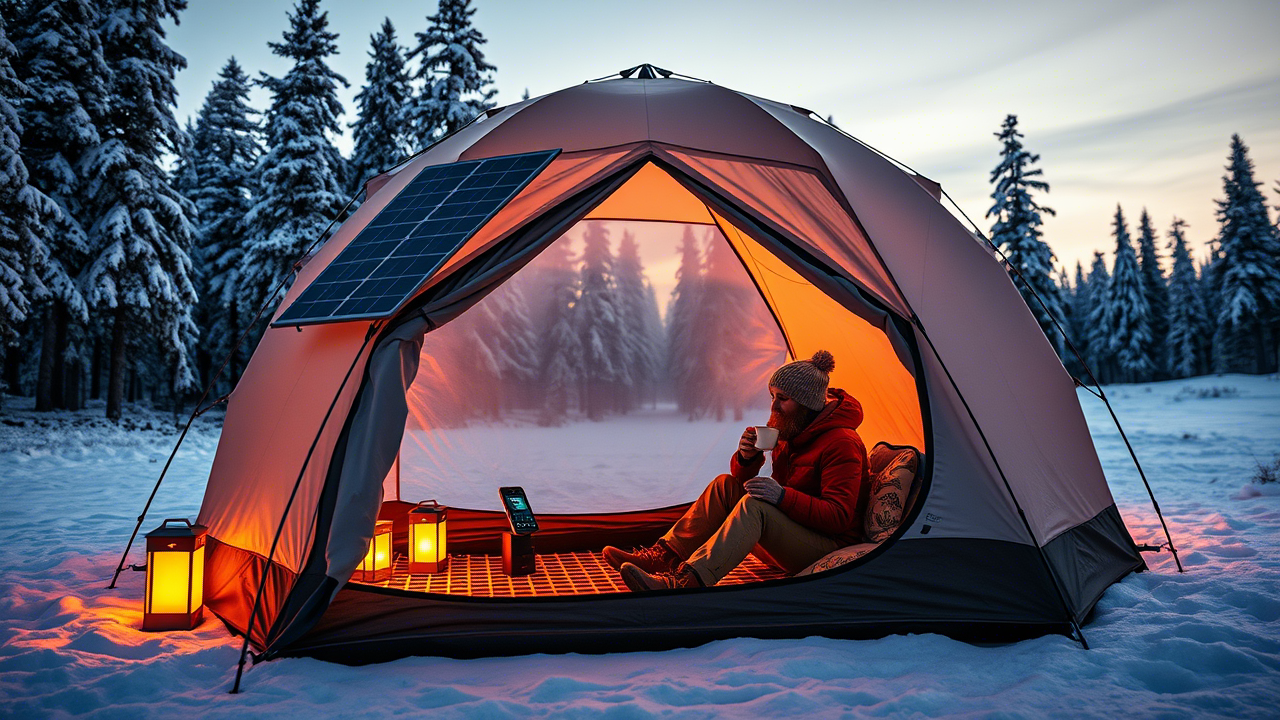
Control Hub: Central touchscreen controls Wi-Fi repeaters, LED lighting, wireless charging pads, and heated flooring.
Use case: This is for couples or small groups that want to add some off-grid winter comfort and real-time energy monitoring to their lives.
2. Cinch Smart Tent
Release: Instant pop-up framework alcoves air into it in seconds and packs down in under a minute.
Lighting & Power: App-controlled 3500 lumen interior LEDs; gleaming perimeter stakes; and modular solar-battery hub.
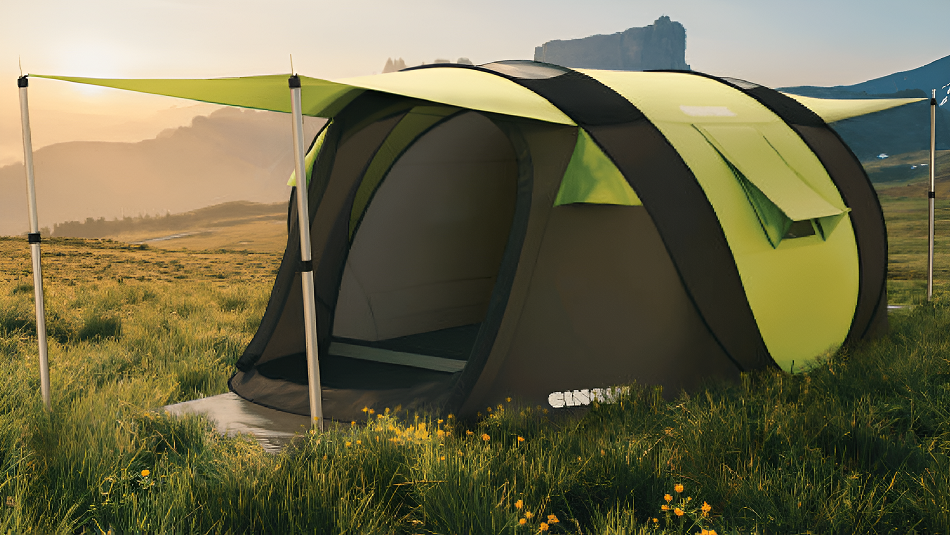
Climate: Retractable canopy for shaded airflow adjustment; mesh networking links multiple tents for group expeditions.
Use Case: The set is perfect for family car campers and festival-goers, where speed, connectivity, and shared power matter.
3. T24 Self-inflating Smart Tent
Facility: One-button inflatable airframes; deflation adds less complication.
Charging & Lighting: USB-C ports and zip-in LED rails for customizable lantern placement.
Capacity: Four sleepers comfortably in 2 fully separated sleep pods.
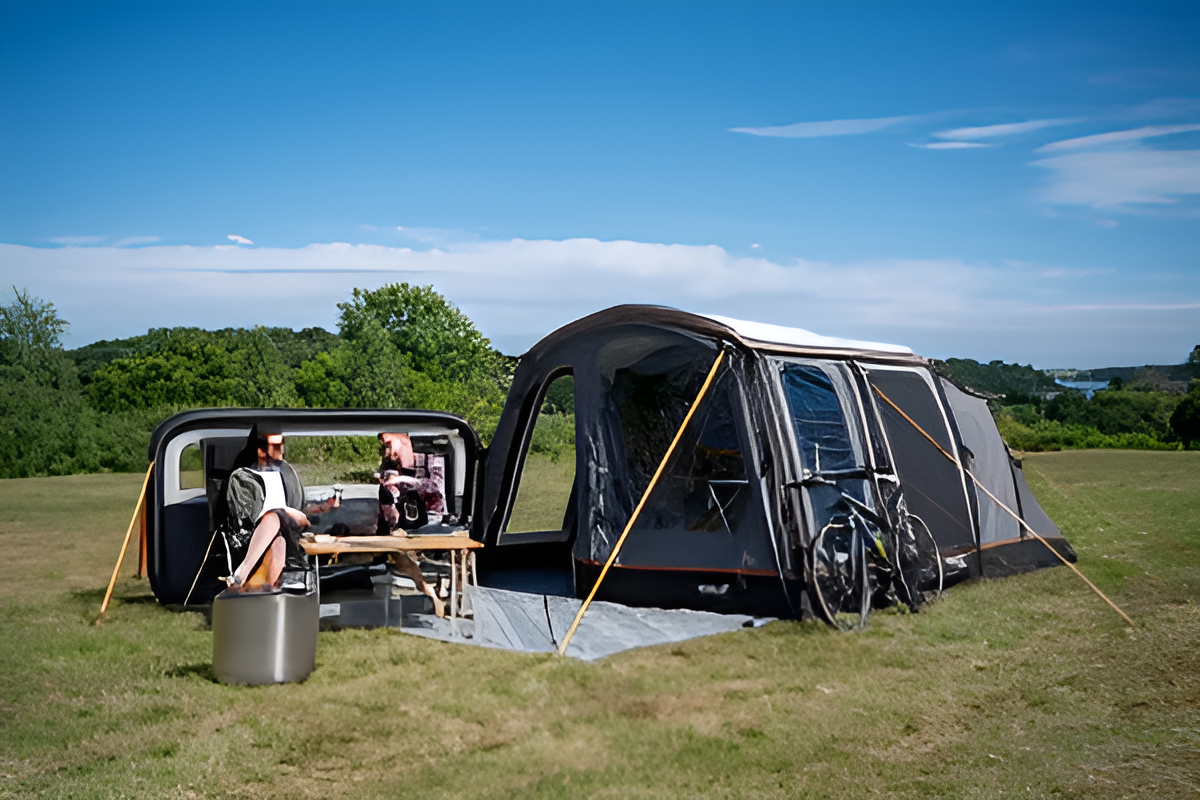
Use case: Group adventurers who prize rapid deployment and modular lighting configurations.
4. PowerDome Solar Glamping Tent
Self-Sufficiency: Self-contained solar power and water-purification systems, plumbing for wastewater management, and smart-home integration features.
Interior: Lavish furnishings, complete climate control, strategic mood-setting LEDs, and touchscreens.
Durability: Mighty-alloy frame withstands wind gusts up to 80 mph.
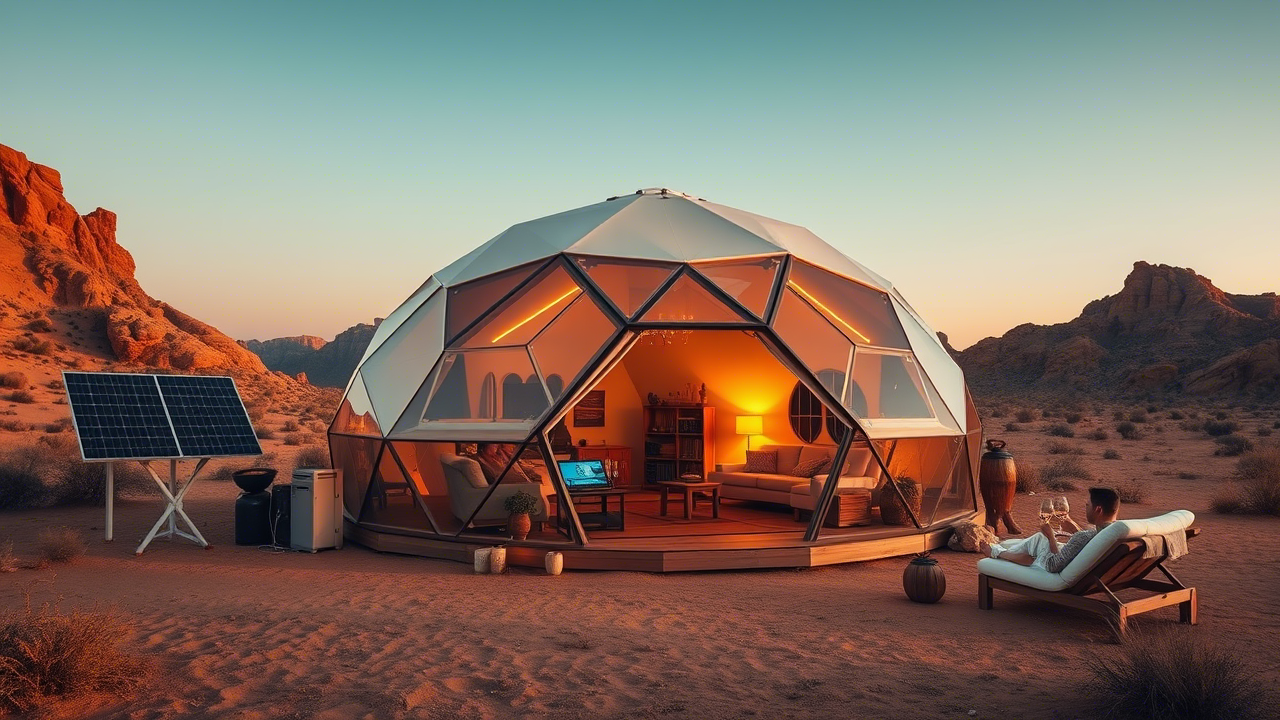
Use Case: Eco-resorts and high-end glamping operators want only a turnkey, all-in-one guest experience.
5. Dragon V1 Backcountry Tent
Design: Exoskeleton frame strong enough to withstand heavy snow loads while supporting an array of load-bearing solar panels.
Lighting: LED fixtures are placed inside and outside, each giving over 100 lumens.
Portability: Packs down to 20 pounds.aThey’remized for alpine missions.
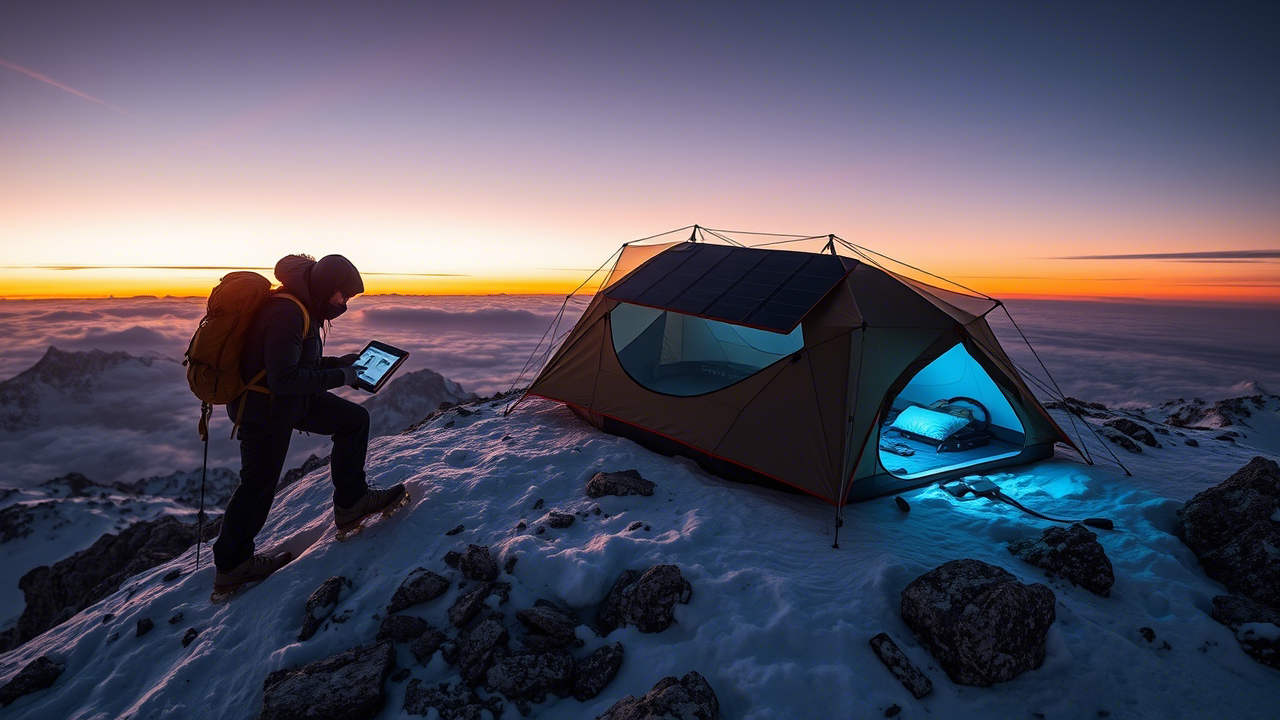
Use case: Mountaineers looking for durable and dependable power and lighting under extreme conditions.
Benefits and Trade-Offs
With the innovation of having bright tents comes a whole cache of disadvantages. More are they holding devices and lighting; no more is the personalized climate comfort and much quicker deployments reclaiming valuable wilderness time. Heated floors, SOS lights, integrated communications- all things that make safety in life and enjoyment possible. Of course, such features come at a cost. Whereas an ordinary tent weighs over ten pounds, more batteries, panels, and electronics can easily raise the weight to almost twice that price, and prices can often find their way into the thousands. Increasing dependence on technology has consequences: there’s no backup if a software glitch or damaged solar strip function is critically missing. Durability is still under question; embedded delicate PV cells and wiring into flexible fabrics direly lodge long-term resilience under harsh conditions.
Conclusion
The era of the bright tent is not one driven purely by gadgets and appliances; it is where we redefine our relationship with the outdoors. Equipped with harnesses for renewable energy harvesting, intuitive controls, rapid-deploy engineering, and personalized comfort, these shelters empower campers to enjoy nature without compromising modern convenience. Which of these advanced tents excites your imagination? Did you experience any innovative shelter gear on any of your expeditions? Record your experiences or bold ideas below; then go on and let others join in on the fun and help fellow explorers discover the forward-looking world of outdoor living.

